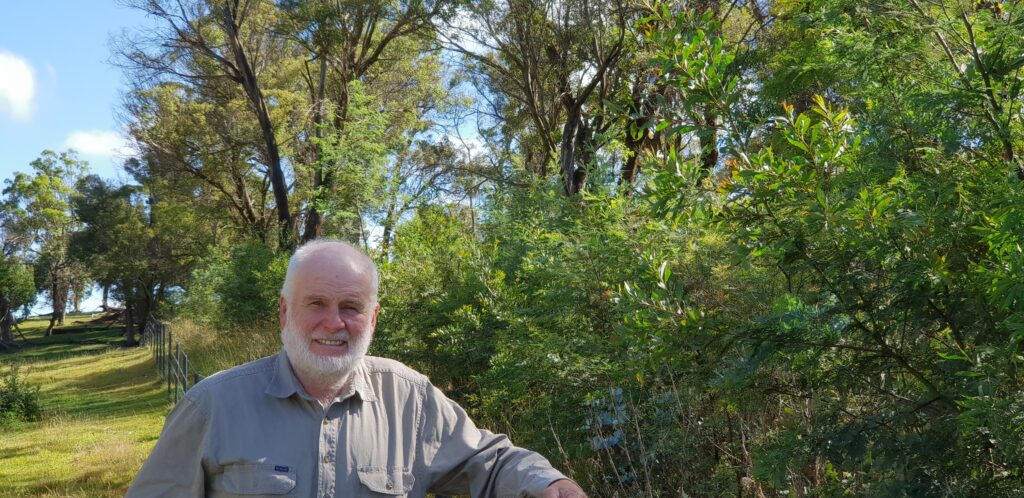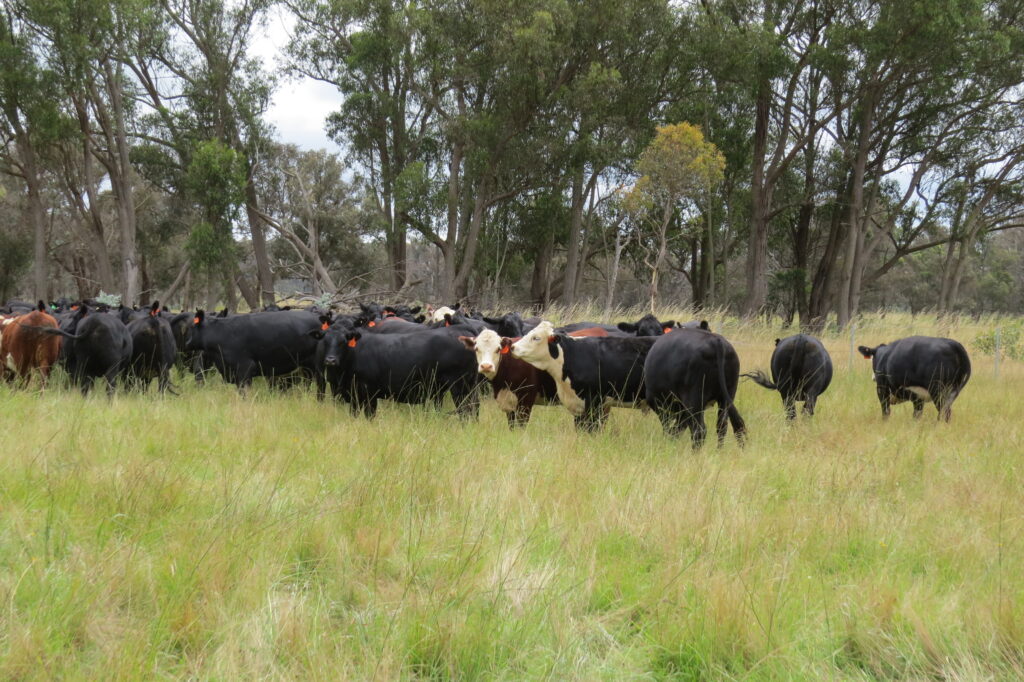Four decades of looking after the land pays dividends
Beef producer Gordon Williams used to have eyes only for his cattle – now, he’s more likely to be studying the ground, the trees and pasture to gauge how his farm is tracking.
In response to an episode of dieback in the 1980s that caused widespread devastating death of trees, Gordon and his father started planting trees and shrubs on their 1200-hectare farm, Eastlake, south-east of Uralla on the NSW New England plateau. Forty years later, Gordon is still planting trees and reaping the benefits for his farm.

‘It was really a thing of necessity because the country was bare, open and windswept,’ Gordon said.
Initially planting strips of radiata pine and other shrubs purely to get some shelter back, over time the Williamses moved to planting natives.
By the late-80s, Gordon could see the benefits with the revegetated shelter belts cutting wind speed, benefiting the pasture and livestock. As a result, Gordon took a long-term view to do some planting most years. He also subsequently introduced a range of other improvements on his farm like subdivisions based on slope, aspect and soil type to better manage pastures.
‘We have done a lot of things to develop a whole farm plan that is an integrated management approach.
‘The farm is always run at 75 to 80 per cent of maximum carrying capacity, which suits us. We look after the land at that capacity and it gives us a good long-term net financial return,’ Gordon said.

Farmers like Gordon are part of a network of thousands of landholders across Australia who are actively managing their land to support nature. Australia’s latest State of the Environment Report, released in July 2022, recognises the critical role that private land conservation is playing in protecting our unique wildlife and habitats.
In the early days, most of Gordon’s revegetation efforts were self-funded. For the last 20 years he has received Landcare and NSW Local Land Services funding which he estimates has covered roughly one-third of the cost of plantings.
Gordon also receives around $15,000 in annual payments for 72 hectares of his farm that are under a 15-year Conservation Agreement with the NSW Biodiversity Conservation Trust (BCT). Landholders with BCT Conservation Agreements receive payments and support to manage native vegetation and biodiversity on their land.
Gordon says it is a form of insurance that helps stabilise the farm while also supporting biodiversity, which in turn helps make the farm more resilient and sustainable. Gordon has plans to permanently protect a further 24 hectares through a conservation covenant with another 100 hectares already protected for nature in shelter belts or regenerated ridgelines.
‘It is not just about planting some trees or looking after an area that is interesting; it is about opportunities for getting some income and making the farm more productive and resilient over time,’ Gordon said.

While the farm is now leased out, Gordon maintains a very active role in its day-to-day management.
One particular area of interest to Gordon is the increasing numbers of woodland birds found in the revegetated shelter belts and ridgelines.
‘I can’t say exactly how much a 40m windbreak is going to return me in dollars and cents because it’s got some small woodland birds in it.
‘I think that it does add something, plus the shelter for my livestock and pasture, but it is part of the whole big picture – the systems approach to managing the farm,’ Gordon said.
Across Australia, one-third of woodlands have been degraded. In temperate regions, including the New England Tableland, up to 80 per cent of woodlands have been cleared. Habitat loss is a major threat to native birds and the populations of some of our most threatened birds are declining. Over 50 species of woodland birds are listed as threatened in NSW.

The woodland bird population at Eastlake has been monitored over three seasons. One of the birds that has been spotted at Eastlake is the Little Eagle (Hieraaetus morphnoides), which is currently listed as Vulnerable in NSW and the ACT. Little Eagles, which are one of the world’s smallest eagles, live in woodlands and open forests, often along river corridors.
To help the ensure the survival of the Little Eagles, actions including revegetation with diverse native species, weed control and management of grazing pressures are recommended – just what Gordon has been refining at Eastlake.
After 40 years, Gordon shows no signs of slowing down. With farmers like him showing the way, there is good news for those living off the land and for our threatened animals and plants.
Read more stories of landholders actively managing land for nature.
